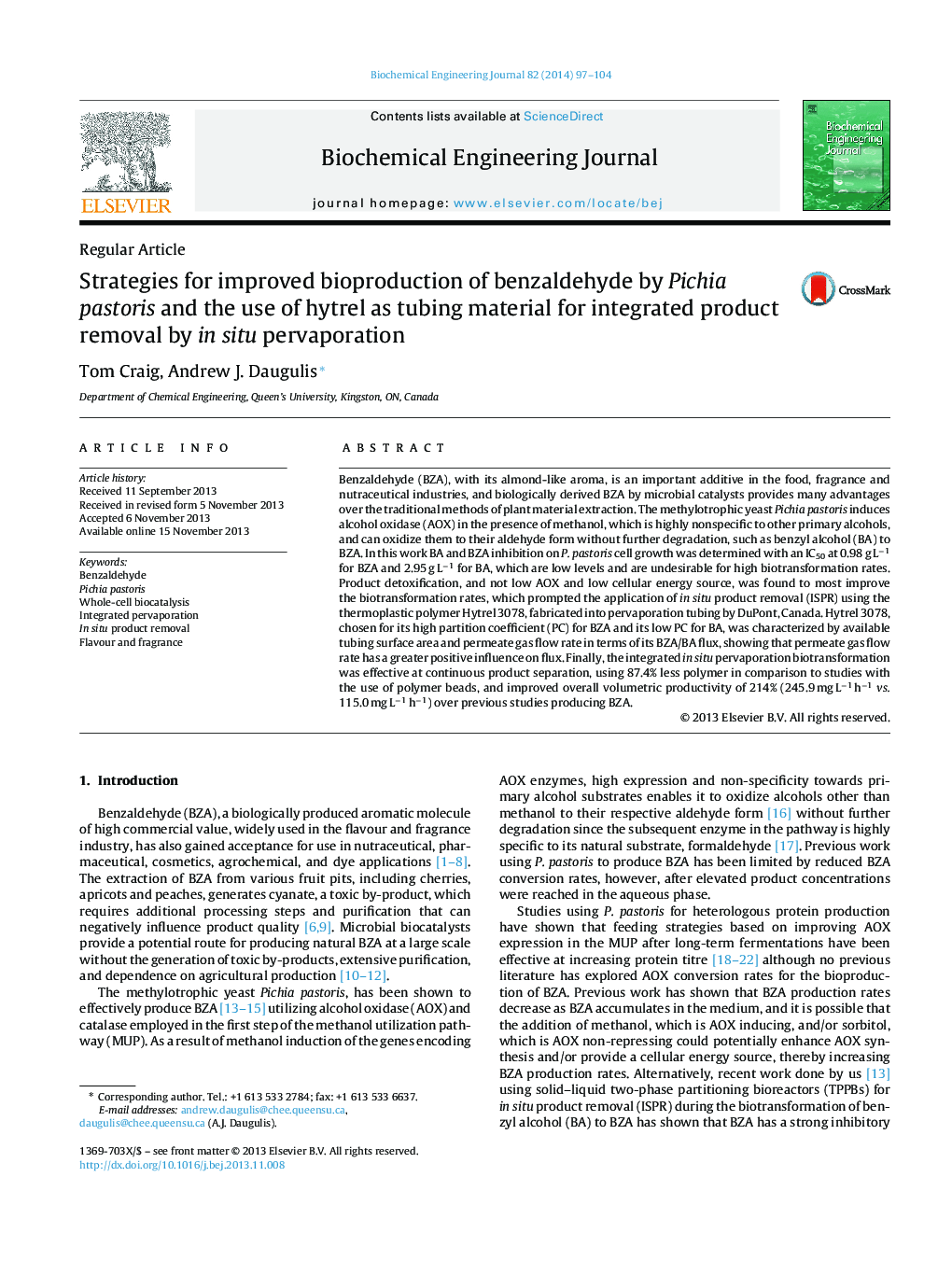| کد مقاله | کد نشریه | سال انتشار | مقاله انگلیسی | نسخه تمام متن |
|---|---|---|---|---|
| 6484079 | 158 | 2014 | 8 صفحه PDF | دانلود رایگان |
عنوان انگلیسی مقاله ISI
Strategies for improved bioproduction of benzaldehyde by Pichia pastoris and the use of hytrel as tubing material for integrated product removal by in situ pervaporation
دانلود مقاله + سفارش ترجمه
دانلود مقاله ISI انگلیسی
رایگان برای ایرانیان
کلمات کلیدی
موضوعات مرتبط
مهندسی و علوم پایه
مهندسی شیمی
بیو مهندسی (مهندسی زیستی)
پیش نمایش صفحه اول مقاله

چکیده انگلیسی
Benzaldehyde (BZA), with its almond-like aroma, is an important additive in the food, fragrance and nutraceutical industries, and biologically derived BZA by microbial catalysts provides many advantages over the traditional methods of plant material extraction. The methylotrophic yeast Pichia pastoris induces alcohol oxidase (AOX) in the presence of methanol, which is highly nonspecific to other primary alcohols, and can oxidize them to their aldehyde form without further degradation, such as benzyl alcohol (BA) to BZA. In this work BA and BZA inhibition on P. pastoris cell growth was determined with an IC50 at 0.98 g Lâ1 for BZA and 2.95 g Lâ1 for BA, which are low levels and are undesirable for high biotransformation rates. Product detoxification, and not low AOX and low cellular energy source, was found to most improve the biotransformation rates, which prompted the application of in situ product removal (ISPR) using the thermoplastic polymer Hytrel 3078, fabricated into pervaporation tubing by DuPont, Canada. Hytrel 3078, chosen for its high partition coefficient (PC) for BZA and its low PC for BA, was characterized by available tubing surface area and permeate gas flow rate in terms of its BZA/BA flux, showing that permeate gas flow rate has a greater positive influence on flux. Finally, the integrated in situ pervaporation biotransformation was effective at continuous product separation, using 87.4% less polymer in comparison to studies with the use of polymer beads, and improved overall volumetric productivity of 214% (245.9 mg Lâ1 hâ1vs. 115.0 mg Lâ1 hâ1) over previous studies producing BZA.
ناشر
Database: Elsevier - ScienceDirect (ساینس دایرکت)
Journal: Biochemical Engineering Journal - Volume 82, 15 January 2014, Pages 97-104
Journal: Biochemical Engineering Journal - Volume 82, 15 January 2014, Pages 97-104
نویسندگان
Tom Craig, Andrew J. Daugulis,